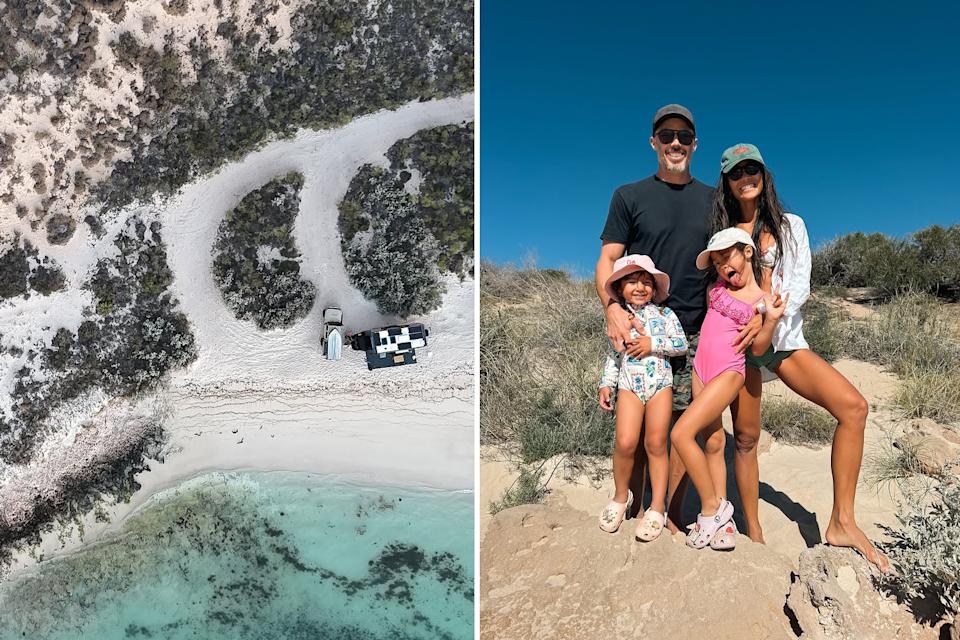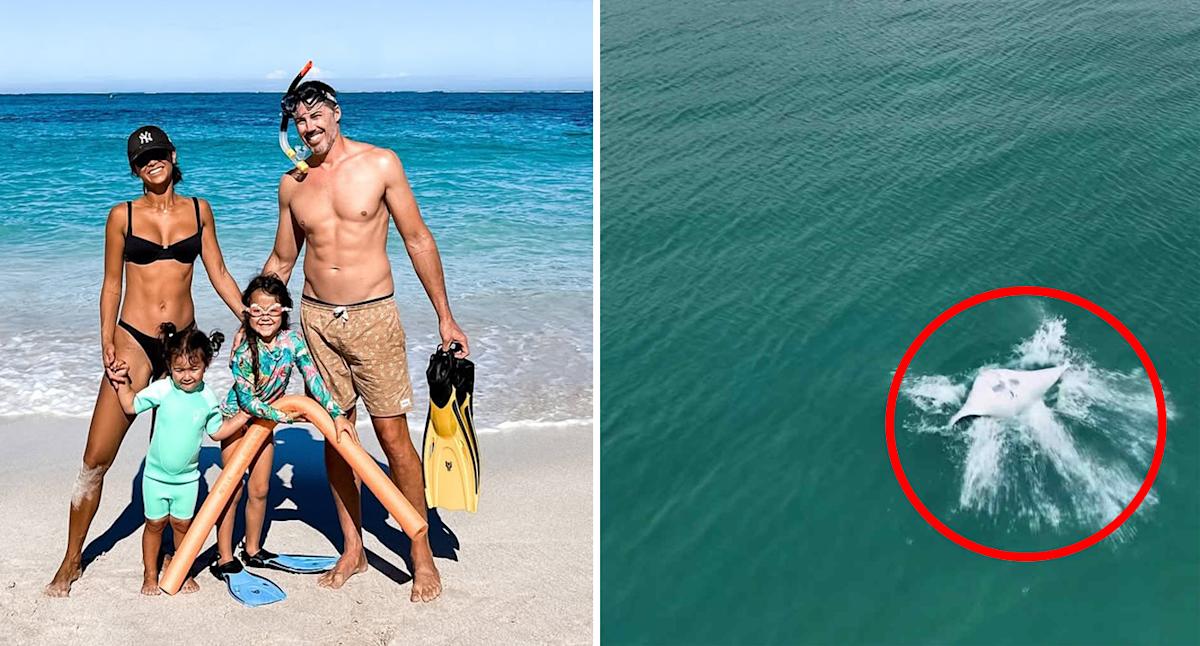A family travelling the country in their caravan were treated to an incredible display off the Australian coast right from their campsite.
Renee Pike and her husband David, who have spent the past several months camping in Western Australia’s Ningaloo region with their two children, aged 6 and 3, couldn’t believe their eyes when reviewing drone footage of a reef manta ray cruising right by their home on wheels.
Mum Renee, who witnessed the incredible moment at Winderabandi Point in June, told Yahoo News the encounter was “pretty incredible”.
“We saw the manta cruise past our camp,” she explained, adding they decided to throw up their drone to get a closer look. The stunning creature was gliding through the water before it suddenly breached the surface and “did a backflip” in the water.
“I’ve never seen that before,” Renee said. She added that the manta captured in the footage is the “biggest” they’ve spotted during their extensive travels.
Why do manta rays do backflips?
Ningaloo is well known for its remarkable marine megafauna, including manta rays, whale sharks, humpback whales, turtles, and even the elusive dugong.
Despite countless daily encounters on the reef, Dr Amelia Armstrong, principal researcher at the Ningaloo Manta Project, described what Renee and David saw as a very “lucky moment”. While breaches themselves aren’t rare, she said catching one on film is “less common”.
Dr Armstrong said that because the manta’s cephalic lobes, the lobes near her mouth, are rolled up, it suggests she wasn’t feeding. “With no other animals visible nearby, I think it’s likely she was trying to shake off a remora (sucker fish), which often cling to large marine animals and can irritate the skin,” she said.
Even more amazingly, Dr Armstrong was able to identify the animal in Renee and David’s footage as a manta nicknamed The Hoff. The stunning creature was first photographed in Coral Bay in 2005, and has been spotted more than 50 times around the region since then.
The belly markings of a manta ray remain unchanged throughout its lifetime, as a useful and unique ‘fingerprint’ for identification. The Ningaloo Manta Project’s citizen science has collected thousands of photos over the years, helping scientists keep track of the rays that call the Ningaloo home.
“Every sighting adds a valuable piece to the puzzle of understanding these animals and their mysterious lives along our coastline,” Dr Armstrong said.
“It’s fantastic to see people sharing their footage and stories as it helps us learn more to better protect these beautiful animals, and can inspire others to care.”

Renee, David and their two children have been living off the grid in their caravan on the Ningaloo Coast since April. Source: @oh.hey_renee
Family’s incredible caravan adventure around Australia
Renee and her family, originally from the Gold Coast, have been traveling full-time since March 2023 and show no signs of stopping. While the West Coast holds a special place in their heart for its rugged terrain and incredible reef wildlife, spending two months in Tasmania was another highlight.
Renee runs her consulting agency, helping female-founded businesses while on the road. David, previously a construction worker, enjoys quality time with the kids.
Travelling around the country has been fantastic for “unplugging from the grind” and realising that “there is another way to do life” for Renee and her family.
“It’s a really cool way of life,” she said, adding that meeting like-minded families has been a highlight of their travels. “It takes a lot to leap, but it kind of shakes you up a bit and makes you realise what’s important,” she said.
Do you have a story tip? Email: newsroomau@yahoonews.com.
You can also follow us on Facebook, Instagram, TikTok, Twitter and YouTube.


